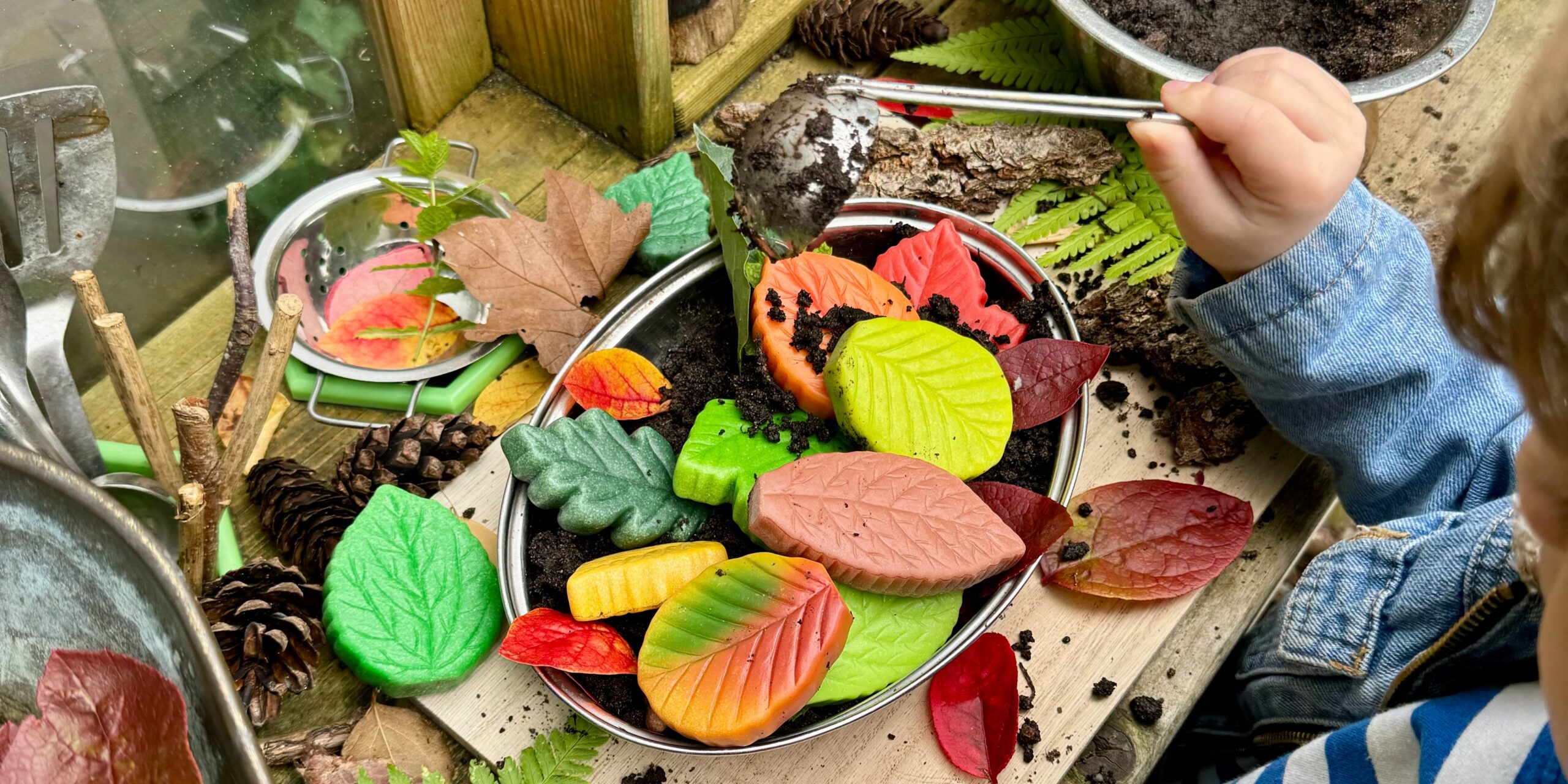Bring the changing seasons into your setting with these hands-on activities. Designed to spark curiosity, support early learning goals and nurture children’s connection with the natural world.
Activities for all Seasons
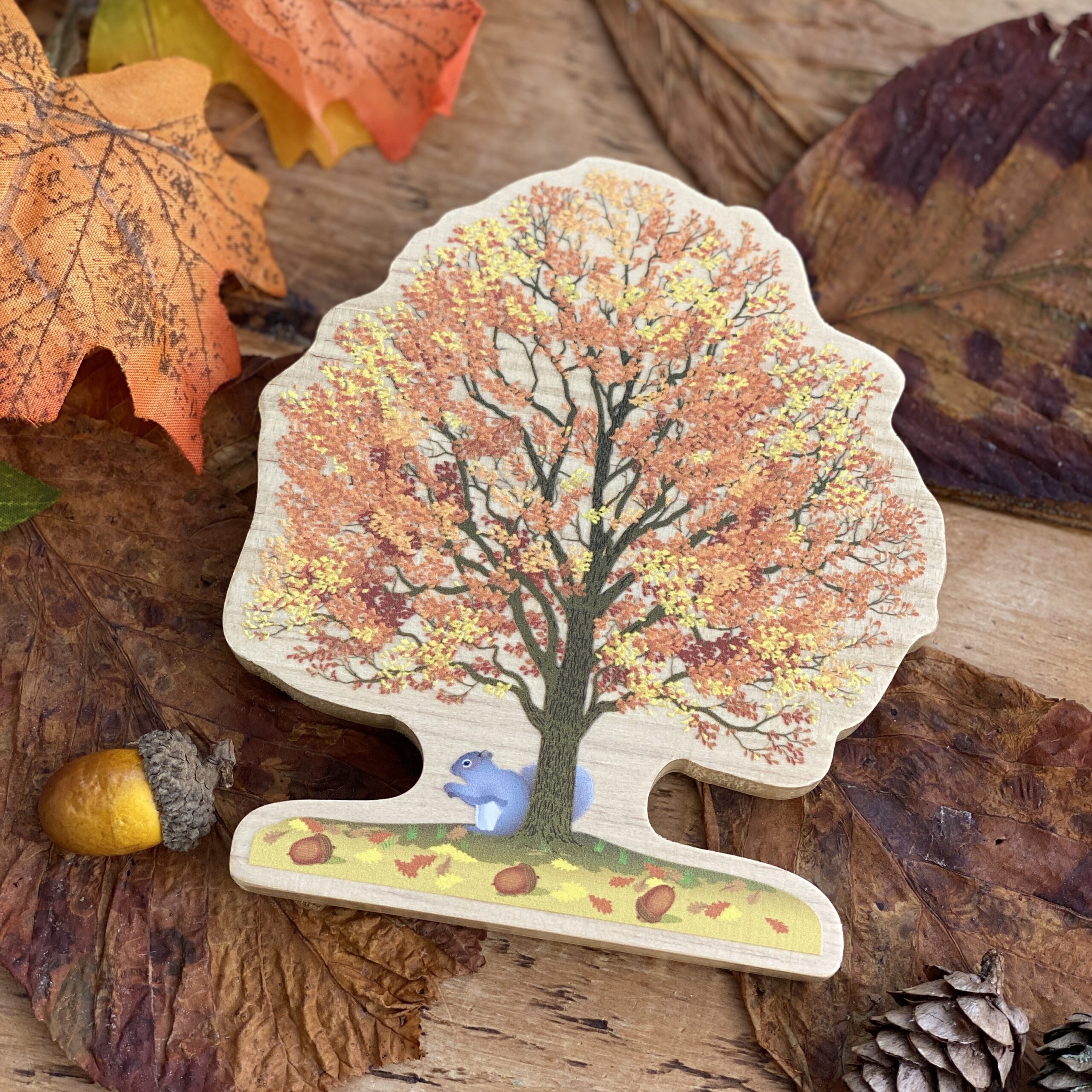
Trees of Change
How: Provide the Four Seasons Wooden Trees alongside loose parts (cotton wool for snow, tissue for leaves, pebbles for buds, pompoms for fruit) for children to decorate trees for different seasons and sort them.
Look closely at the animals on the wooden trees, can you spot them in the local area?
Learning: Sorting, sequencing, understanding seasonal change, creativity, observation
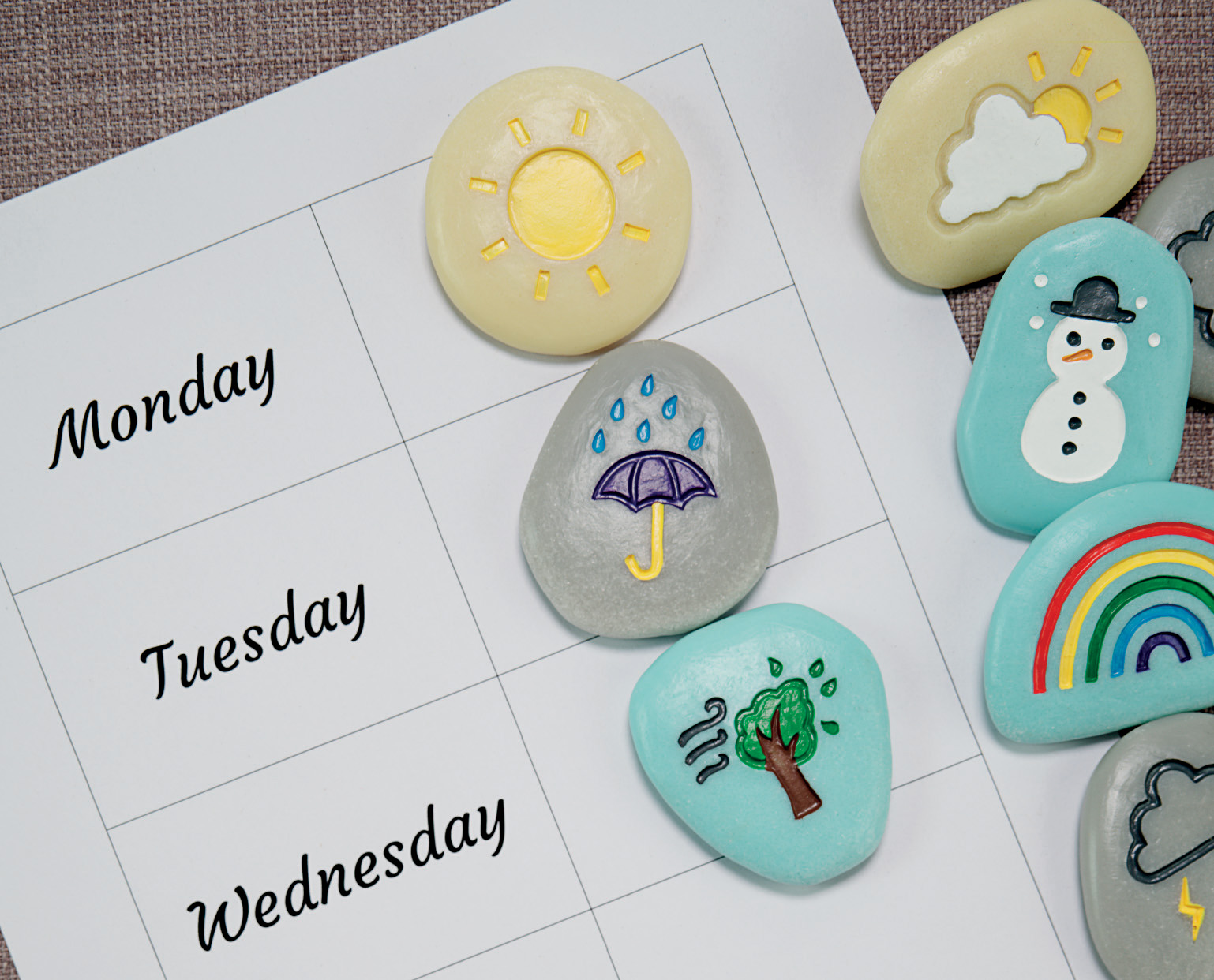
What’s the Weather Today?
How: Put the Weather Stones in a bag. One child removes a stone, says the weather condition, and then his partner rummages through a collection of clothes to dress in a way they feel is appropriate for the weather. Include a selection of hats, sunglasses, umbrellas, scarves and gloves to choose from.
Learning: Observation, vocabulary development, imaginary play, collaboration, communication
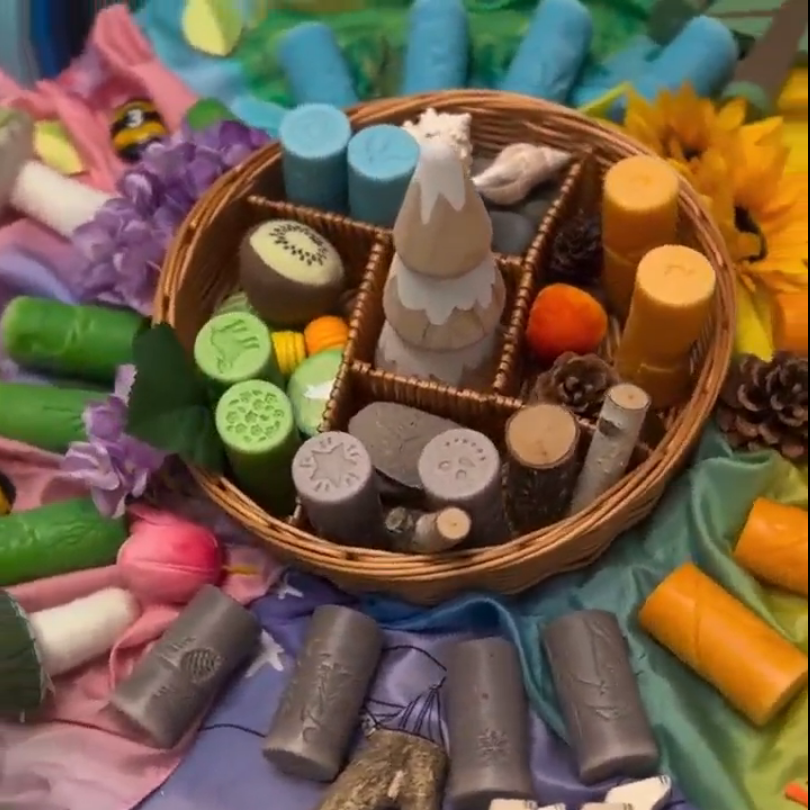
Seasonal Nature Table
How: Create a seasonal display with Let’s Roll Seasons, play dough, natural items (leaves, seeds, acorns, feathers, twigs), loose parts, animal figures, books, and pictures. Add autumn scents (cinnamon, pumpkin) to the playdough for added sensory feedback.
Learning: Observation, classification, vocabulary building, environmental awareness.
🍂 Autumn Activities🍂
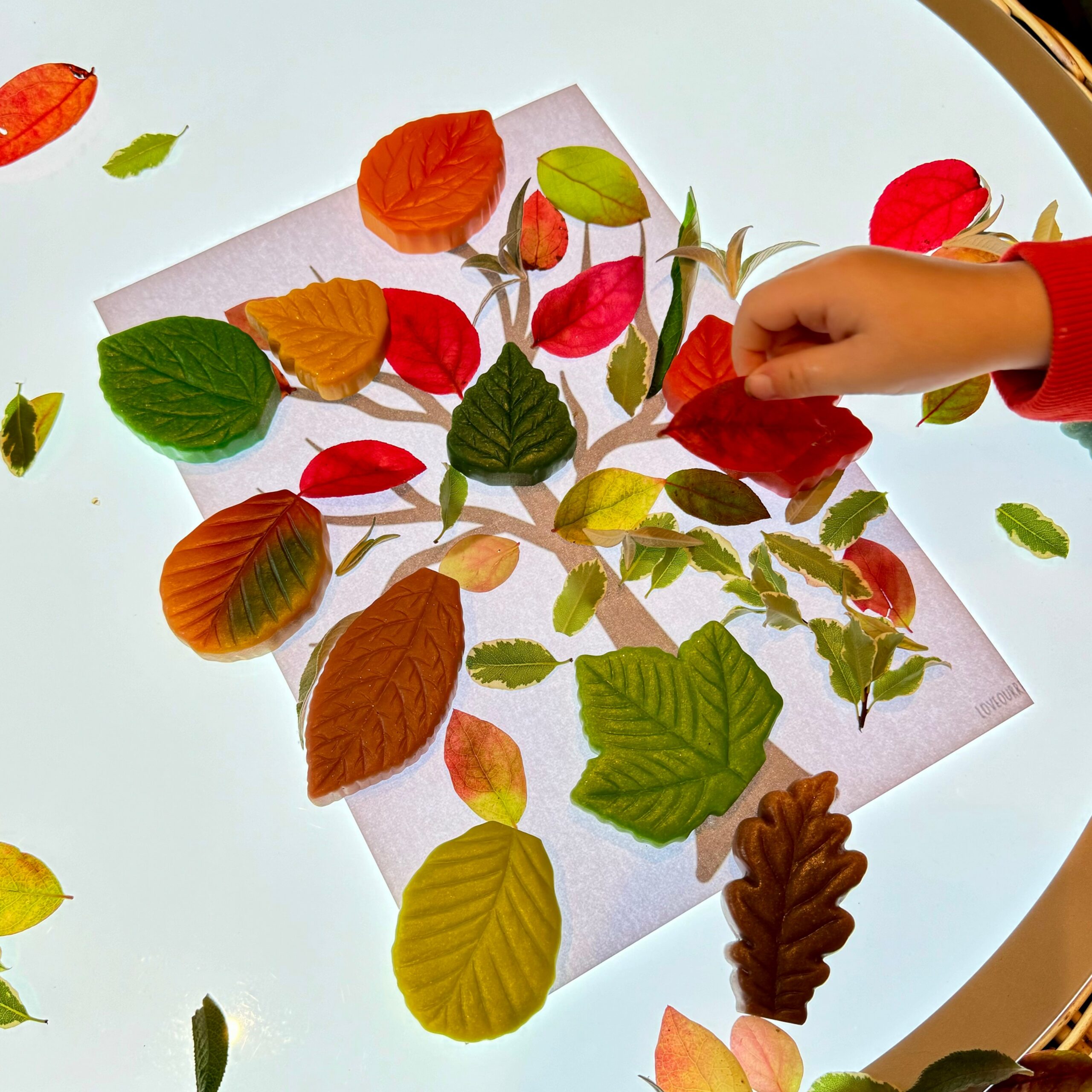
Leaf Nature Art
How: Press the Leaves – Sensory Play Stones (or real leaves) into playdough and add to a simple outline of an animal or a tree to create colourful art:
- Use the leaf stones or imprints to decorate the tree.
- Create animals by adding features: beak, eyes and legs for a bird; several leaves can make a lion’s mane or use the leaf prints to create a hedgehogs’ body/prickles.
Learning: Observation of shape & pattern, fine motor skills, creative expression.
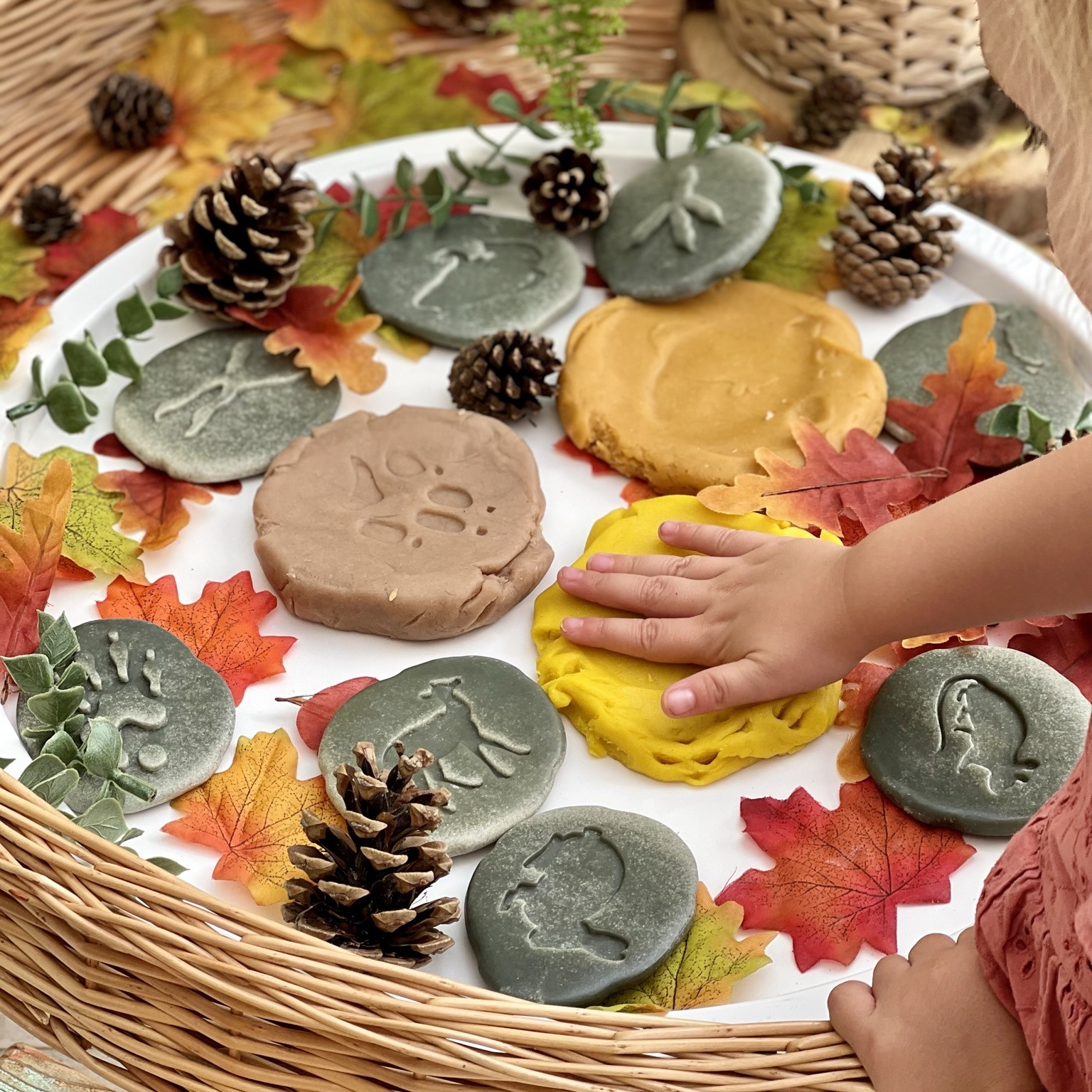
Woodland Tales
How: Use Woodland Footprint stones in mud, sand or playdough to create animal tracks. Read The Gruffalo’s Child and encourage children to tell stories about the tracks.
Learning: Storytelling, sequencing, imagination, understanding animal behaviours.
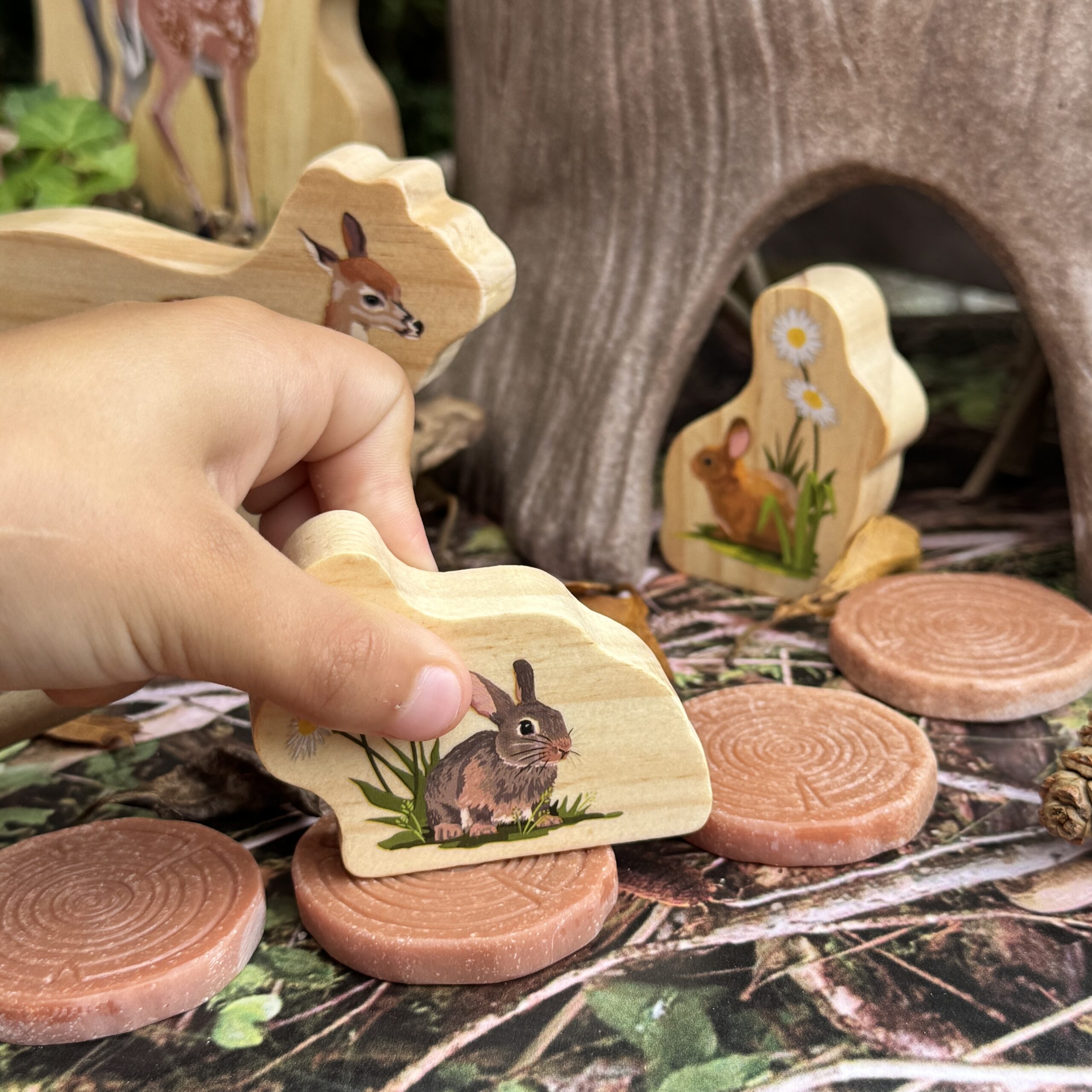
Who lives in a house like this?
How: Build a woodland habitat for the Woodland Animal Families using bark, twigs, soil, moss, pebbles, and fabric for water. Discuss how animals make homes.
Learning: Understanding the World (habitats), imaginary play, collaboration, communication.
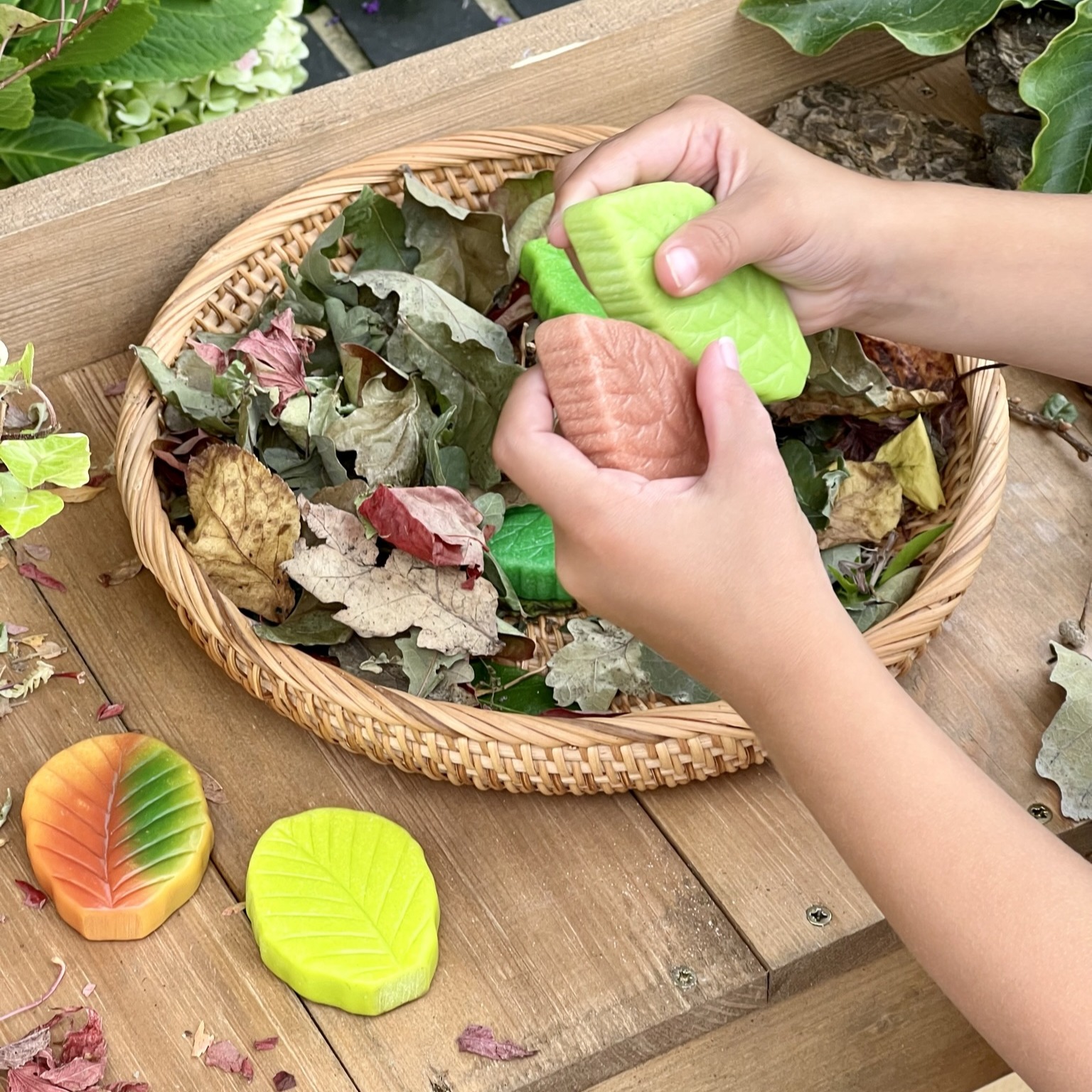
Feely Game
How: Hide the Stone Leaves in a basket of real leaves. Children can identify by touch, describe textures, and match pairs.
Learning: Fine motor skills, sensory exploration, descriptive language, critical thinking.
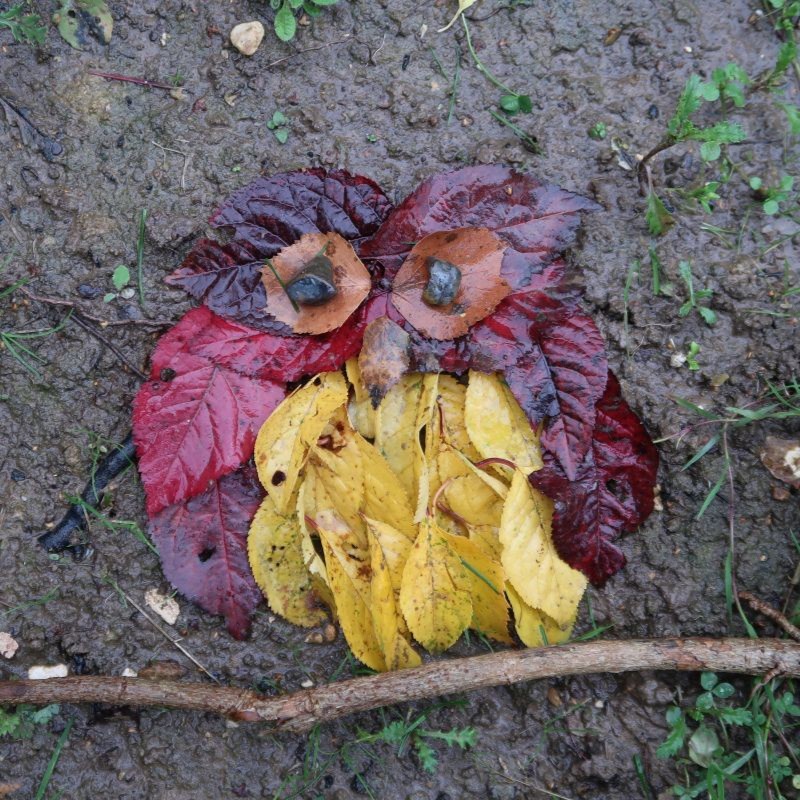
Woodland Art
How: Collect twigs, cones, and leaves to make large forest-floor art of the Woodland Animal Families or any other animals you might find in the woods.
Learning: Creativity, mark-making, self-expression, teamwork.
❄️ Winter Activities ❄️
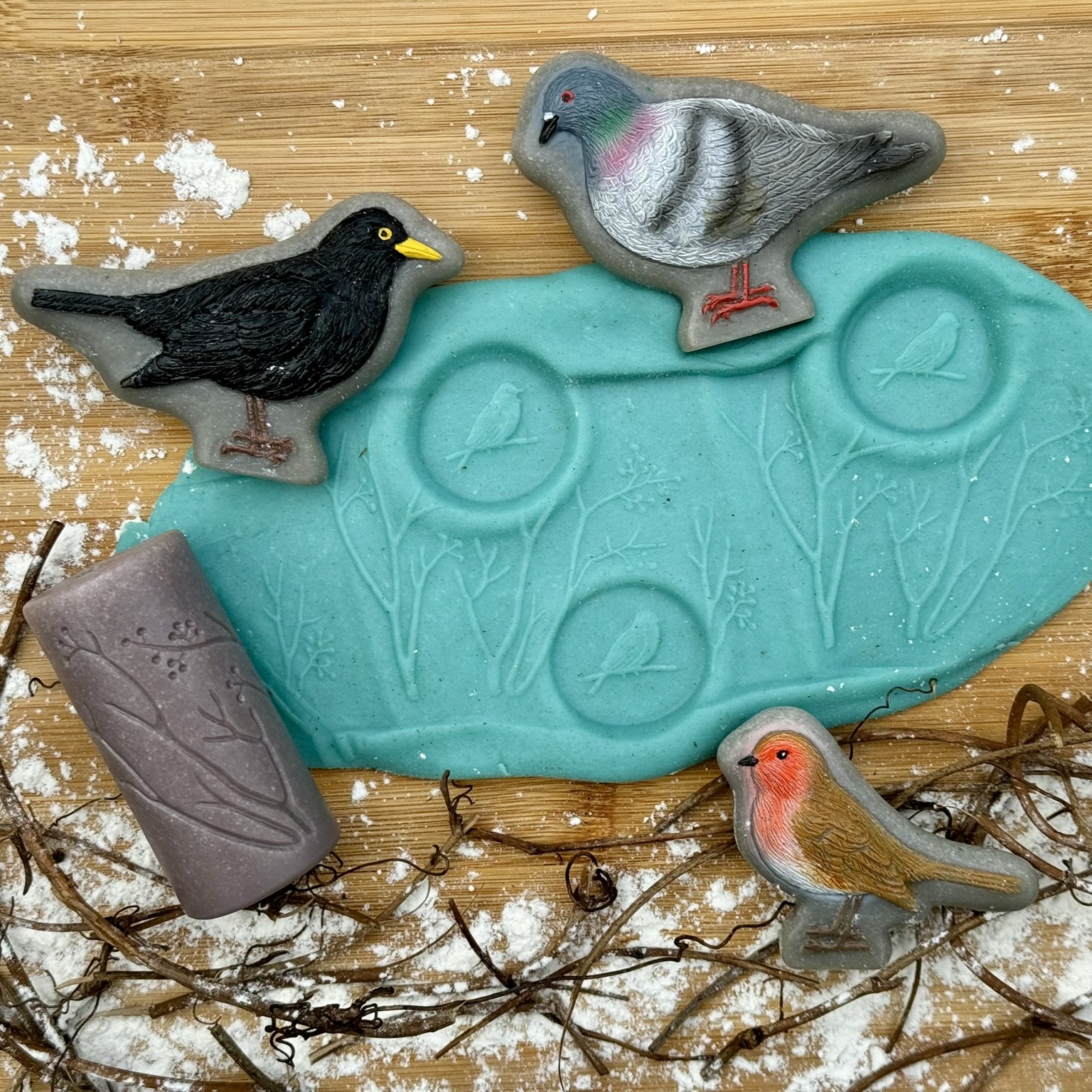
A Winter’s Tale
How: Use Let’s Roll Seasons with coloured and seasonally scented dough (dark blue sky, white snow, green trees, red berries) to make a winter scene. Add figures or natural loose parts for storytelling.
Learning: Fine motor development, mark-making, imaginative play.
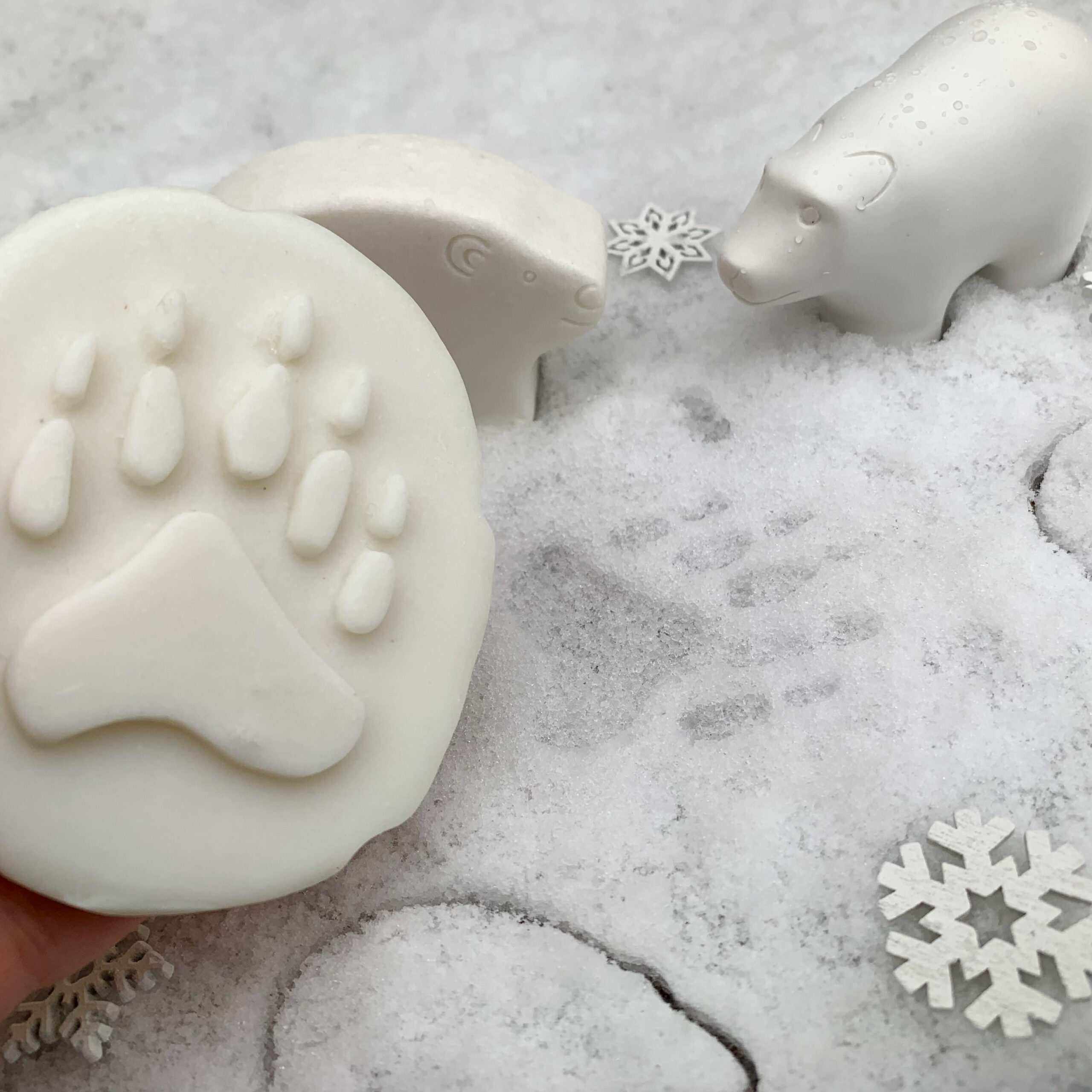
Snowy Tracks
How: Use real snow or make cornflour “snow” playdough with added biodegradable glitter for sparkle. Spread it in a tray for stamping with polar footprints. Guess the animal and act out its movements.
Learning: Fine and gross motor skills, sensory play, imaginative storytelling, science, understanding animal behaviours.
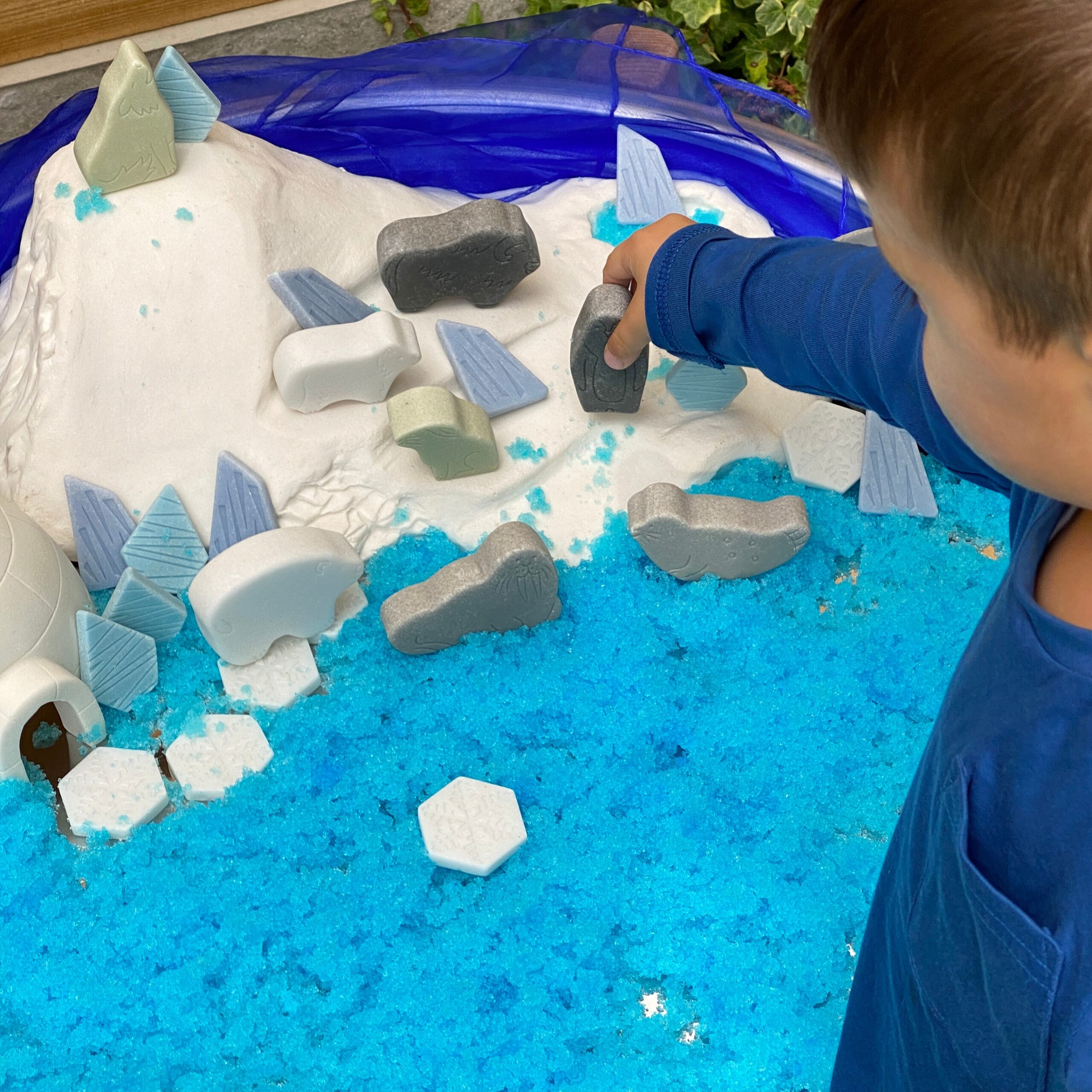
Icy Adventures
How: Create a winter landscape with ice cubes, water, and white fabric for children to role-play with polar animals, scenery stones, igloo and iceberg.
Learning: Sensory exploration, imaginary play, collaboration, communication.
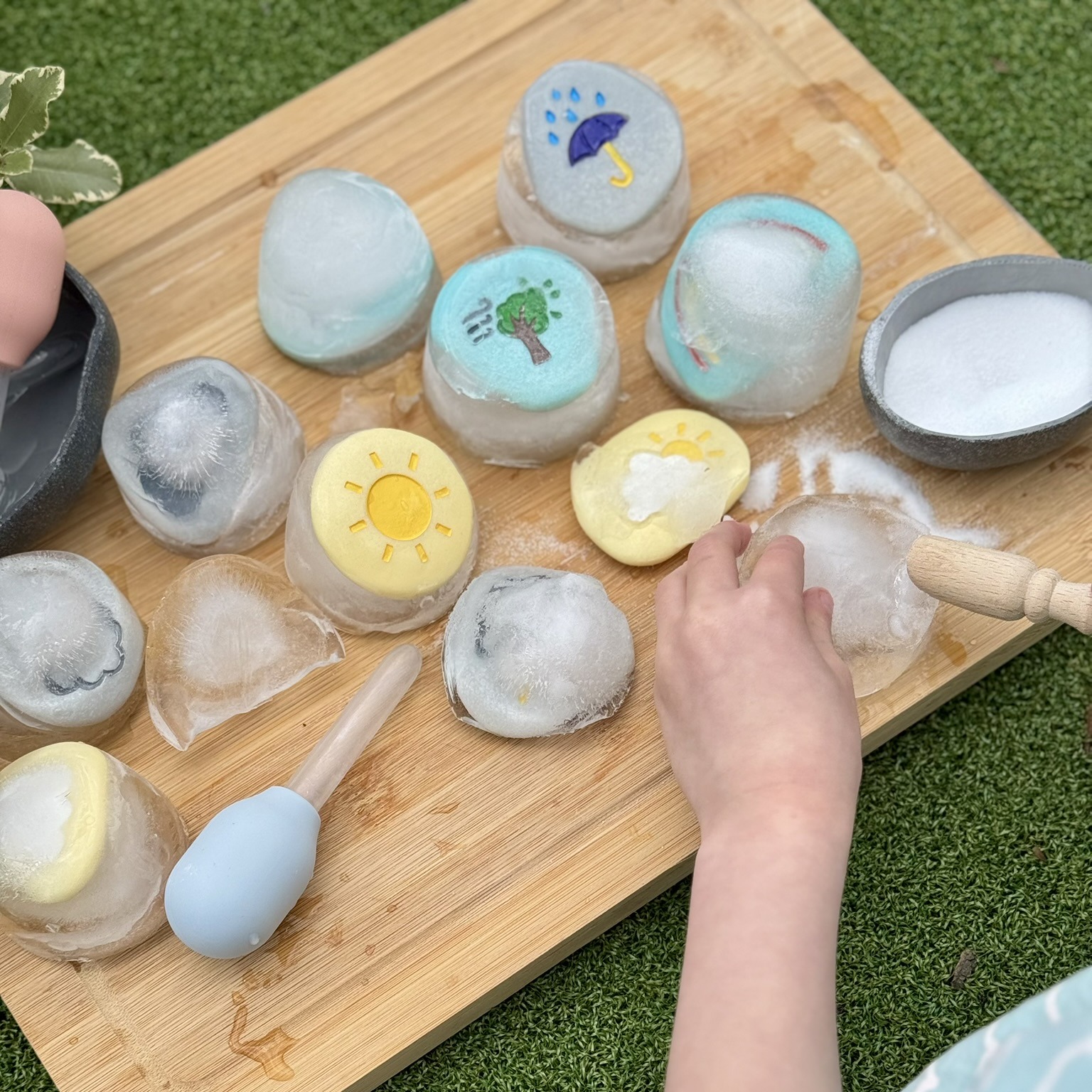
Frozen Weather Forecast
How: Freeze the Weather Stones in small containers of water to create icy “weather capsules.” Invite children to experiment with different ways of releasing the stones: pouring warm water over them, sprinkling with salt, or leaving them in the sun. Compare which method works fastest.
Learning: Science (melting/freezing), imaginative play, communication and language development

Snowy Hide & Seek
How: Hide the polar animals in ice, rice, fake snow, shredded paper, or fabric for children to uncover.
Learning: Sensory exploration, problem-solving, fine motor skills.
🌟 Top Tips
- Use Match & Tidy Mats to encourage independence and responsibility at tidy-up time.
- Extend play outdoors: collect natural materials for autumn and press them into clay to make an ‘my autumn treasures’ models
✨ EYFS Links Across Activities:
- Communication & Language: Storytelling, descriptive vocabulary, questioning.
- Physical Development: Fine motor control through stamping printing, and manipulating dough.
- Understanding the World: Seasons, habitats, weather, freezing and melting.
- Expressive Arts & Design: Creative woodland art, play scenes, and role play.
- Personal, Social & Emotional Development: Collaborative storytelling, turn-taking, problem-solving.

